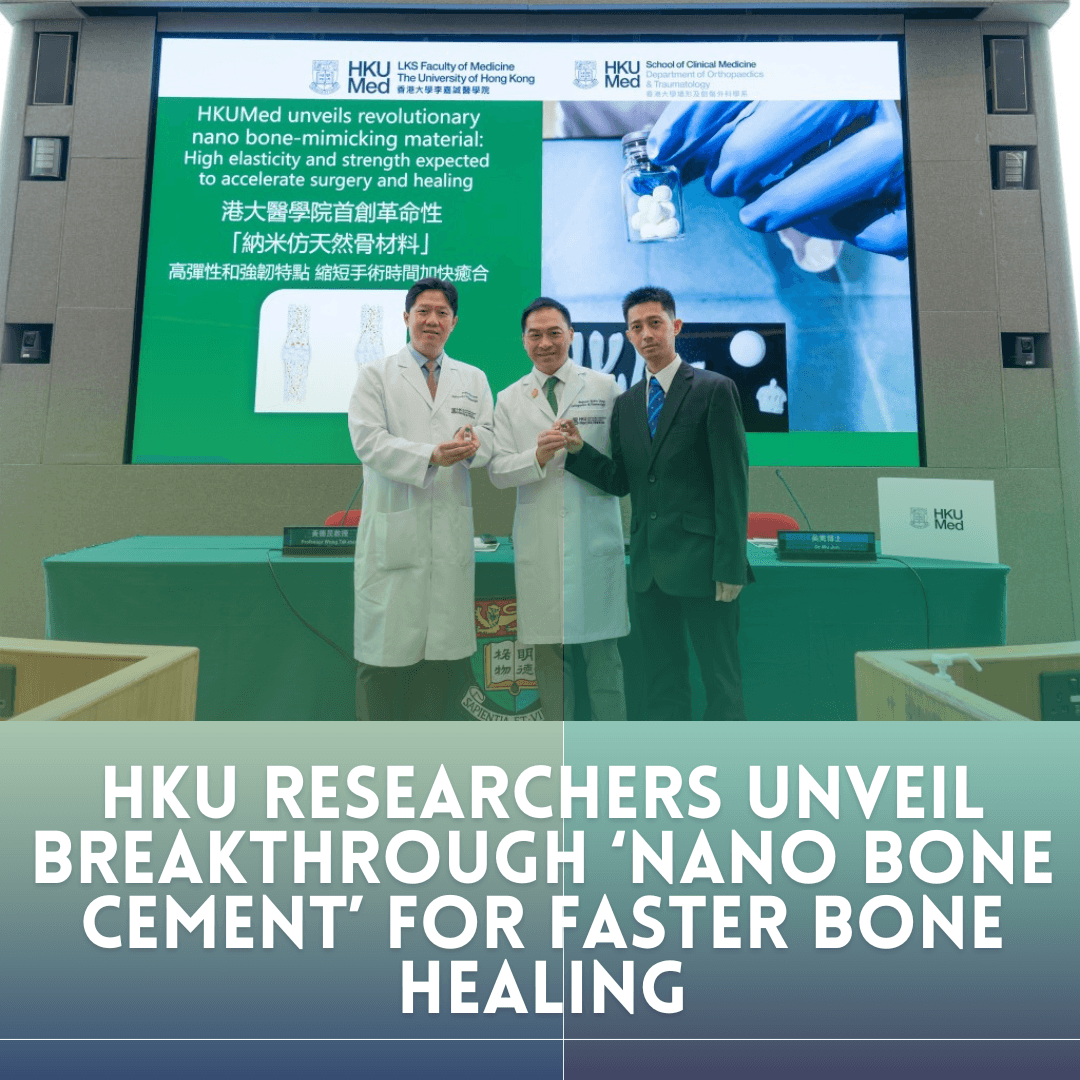HKU researchers unveil breakthrough ‘nano bone cement’ for faster bone healing
HKU researchers unveil breakthrough ‘nano bone cement’ for faster bone healing

Researchers at the University of Hong Kong's LKS Faculty of Medicine have created a revolutionary material called "nano bone cement" that promises to transform orthopedic surgery.
This elastic calcium phosphate material, engineered to mimic the structure of human bone, offers a safer and more effective alternative to traditional bone grafts, which involve harvesting tissue from patients or donors.
The findings, published in Nature Communications, emphasize the material's capacity to provide robust mechanical support and accelerate healing in cases of significant bone defects.
Traditional bone grafts, whether taken from a patient's own body or a donor, present considerable risks. Grafts from the patient can lead to complications at the donor site, while donor grafts may result in infections or immune rejection.
Existing calcium phosphate materials, commonly used in bone repair, harden after mixing but lack the elasticity and strength of natural bone. This makes them susceptible to fracturing under everyday stress, limiting their effectiveness for complex injuries.
The research team overcame these limitations by incorporating nano-cluster anchoring technology, combining the flexibility of organic materials with the stiffness of inorganic ones. This innovative approach resulted in a material with exceptional elasticity, toughness, and strength, closely resembling human bone.
In contrast to previous materials, the nano bone cement can be molded into any shape before hardening, making it perfectly suited for repairing irregularly shaped or complex bone defects. Its ability to expand upon absorbing water allows it to automatically fill defects, simplifying surgical procedures and improving recovery.
The material's porous structure encourages cell adhesion and bone tissue regeneration, promoting faster and more reliable healing. Its biocompatibility ensures safety, while its mechanical properties enhance patient comfort and mobility.
Beyond orthopedics, this technology has potential applications in neurosurgery and dentistry, offering a versatile solution for various medical fields.